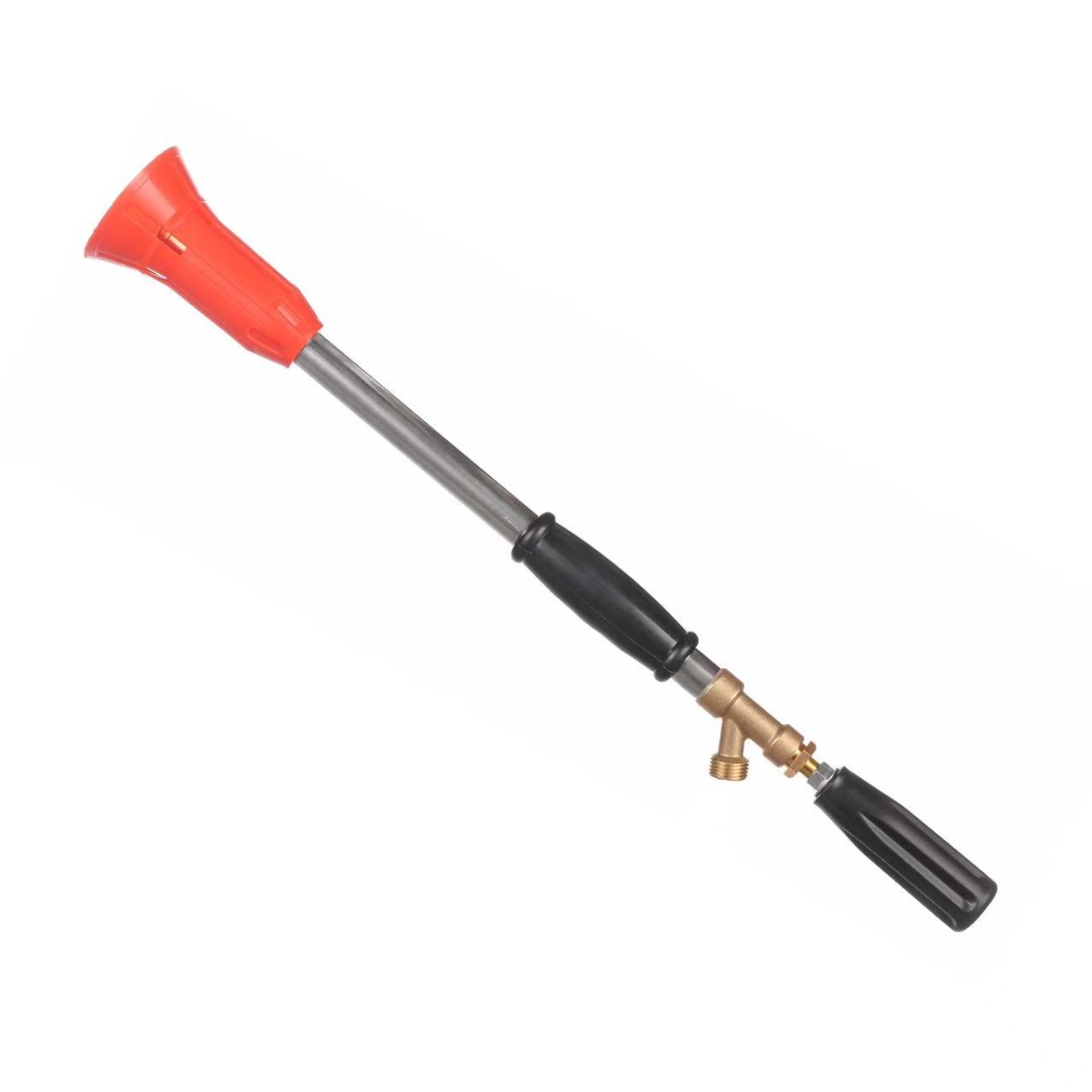As a professional farmland spraying tool, Hangyuan...
See DetailsModern farming often requires equipment that can deliver consistent performance in demanding conditions. Straight agricultural spray guns and agricultural high-pressure spray nozzles are two components that contribute to precise chemical application across various crop types. Understanding how these tools function together helps operators make informed decisions that affect both productivity and resource management. Selecting equipment based on the scale of work, fluid properties, and maintenance expectations creates a foundation for long-term value and dependable operation.

The Functional Role of Straight Agricultural Spray Guns
A straight agricultural spray gun serves as the control point for delivering liquid treatments. Unlike curved or pistol-style options, the straight design allows operators to align the gun with the target area, supporting more direct coverage. This alignment can be particularly helpful when working in dense planting arrangements where maneuvering space is limited.
Straight spray guns are commonly built with metal bodies and ergonomic grips to reduce operator fatigue during long shifts. In heavy-duty farm settings, the materials and internal seals must withstand exposure to a variety of chemicals, including herbicides, insecticides, and foliar nutrients. Choosing models with corrosion-resistant components extends the usable life of the equipment and helps prevent leaks or malfunctions.
Trigger mechanisms often include adjustable flow control. This feature allows users to regulate output to match specific treatment requirements without pausing to change nozzles or alter pump settings. By adjusting pressure at the gun, the operator can fine-tune coverage in real time.
Understanding High-Pressure Spray Nozzles and Their Benefits
High-pressure spray nozzles convert fluid under pressure into controlled droplet patterns. This transformation improves adhesion to plant surfaces and helps reduce chemical drift beyond the intended application area. For farms where drift control is a priority, selecting the appropriate nozzle design is essential.
Flat fan nozzles distribute a wide sheet of spray suitable for row crops, while hollow cone nozzles create a circular pattern that can penetrate dense foliage. Straight jet nozzles produce a narrow, concentrated stream useful for targeting individual plants or treating specific issues like localized pest outbreaks.
The material composition of nozzles also impacts performance. Stainless steel or brass nozzles generally offer greater resistance to wear from abrasive chemicals and maintain consistent orifice dimensions over time. Operators should evaluate whether the chemicals used in their fields require specialized nozzle materials to avoid premature degradation.
Preparing and calibrating equipment for field use
Successful spraying begins with preparation. Before installing nozzles or filling tanks, always flush the system to remove debris or residue from previous spraying sessions. Even tiny particles can affect nozzle performance or clog the passages of the spray gun.
Calibration ensures that output matches the recommended spray rate. This process involves measuring spray volume over set intervals and confirming that the spray pattern is uniform. Recalibration should be performed each time a different type of nozzle is installed or after maintenance that may affect flow.
After assembly, pressure settings should be tested under controlled conditions. Too much or too little system pressure can affect droplet size, reduce coverage, or cause excessive runoff.
Operating tips for increased efficiency
When working in larger fields, it is helpful to divide the area into multiple zones to maintain a consistent spraying rhythm and avoid overlap. Moving smoothly and keeping an even distance from the target surface helps to evenly distribute the agent.
Adjusting the nozzle angle in response to changes in conditions such as wind speed or crop height can improve agent deposition. For example, in breezy conditions, tilting the nozzle slightly downward can reduce drift, while a more vertical position may be better when spraying tall crops.
Monitoring the spray pattern during operation allows the operator to detect blockages or uneven distribution early. Regular stops to check the nozzles can prevent larger problems and save time on re-spraying.
Maintenance procedures to support long-term performance
Direct spray agricultural spray guns and high-pressure nozzles require regular cleaning and inspection. Flushing the equipment with clean water after each use removes chemical residue that can damage internal seals or restrict flow.
Nozzles should be removed and inspected for wear or buildup. Soft brushes and special cleaning tools can clear blockages without expanding the nozzle orifice, maintaining the intended spray characteristics. Replacing gaskets and seals at the initial sign of wear helps maintain constant pressure and reduces the likelihood of leaks.
Proper storage helps extend the durability of your equipment. Storing spray guns and nozzles in a dry, protected area prevents corrosion and reduces exposure to dust or contaminants.
Evaluating Equipment Performance Over Time
Routine observation of field results provides valuable insights into the effectiveness of the spraying system. Consistent coverage, minimal drift, and uniform droplet size indicate that equipment is functioning properly. Deviations in these indicators suggest the need for recalibration or component replacement.
Operators who track performance data can better anticipate maintenance needs and budget for replacements. Investing time in monitoring and adjusting the equipment not only supports crop health but also helps control operational costs.
Using straight agricultural spray guns paired with high-pressure nozzles gives farms the ability to adapt chemical application methods to changing field conditions. When combined with thoughtful preparation, consistent calibration, and careful maintenance, these tools offer a practical solution for heavy-duty spraying tasks across a range of agricultural applications.